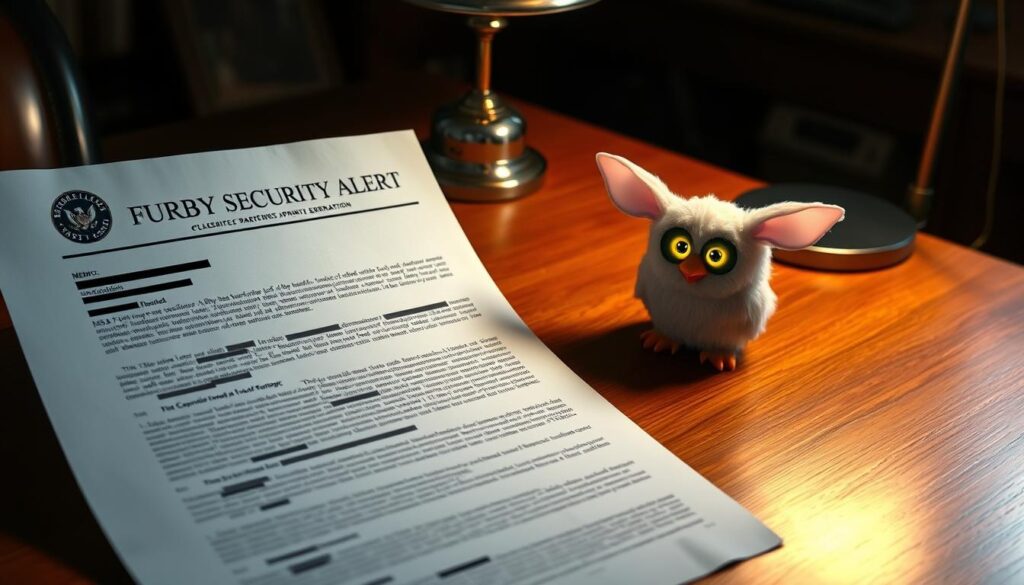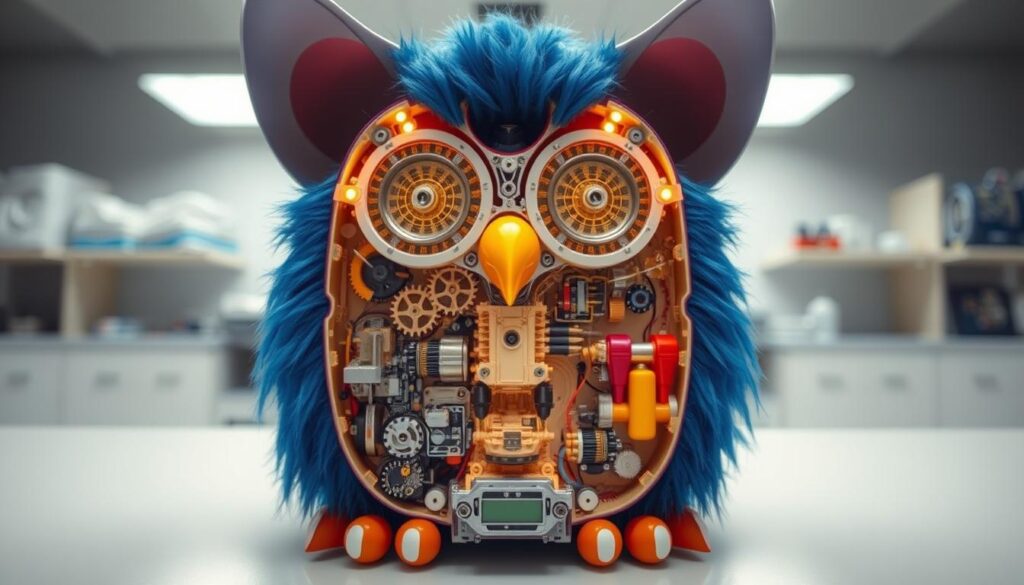In 1998, the Furby became a global sensation. This robotic toy, with its big eyes and chattering sounds, flew off shelves. Time Magazine even named it one of history’s best toys. But behind its playful charm, a strange rumor took hold.
Whispers spread that government agencies feared these toys. Some claimed they could record and transmit conversations. The controversy grew when reports surfaced about bans in secure facilities. Was there truth to the hype, or was it just urban legend?
Over 25 years later, the myth still lingers. With Furby’s 2024 comeback, old questions resurface. This article digs into the facts, separating wild claims from verified events.
From NSA memos to Hasbro’s denials, we’ll explore what really happened. Did a child’s toy truly pose a security risk? Or was it simply a case of tech anxiety gone viral?
The NSA Furby Ban: A Spy Toy Panic?
Government agencies rarely panic over children’s toys—but the Furby was different. In January 1999, a leaked memo from the National Security Agency warned employees about bringing these chatty gadgets into secure facilities. The document, later dubbed the *”Furby Alert,”* classified the toy as a potential risk.

The 1999 Memo That Sparked the Controversy
The security agency’s concern centered on Furby’s “learning” feature. Marketing claimed it could mimic speech patterns. Officials feared synthesized sounds might accidentally replay classified discussions. The memo explicitly banned “audio recording equipment, including toys like Furbies.”
Media outlets like the Washington Post amplified the story, calling it *”hairy espionage.”* Parallel rumors suggested airlines prohibited Furbies due to interference fears. Neither claim held up under scrutiny.
Why the NSA Feared a Talking Toy
Post-Cold War surveillance paranoia played a role. Intelligence communities were hyper-aware of emerging tech. A Tiger Electronics spokesperson quickly denied the spy allegations, stating Furbies only used pre-programmed phrases.
| NSA Concerns | Reality |
|---|---|
| Audio recording capability | No microphone or storage |
| “Learning” classified info | Pre-set responses |
| Data transmission | No wireless technology |
The frenzy faded, but the myth endured. For collectors, the controversy made vintage 90s Furby models even more desirable. Decades later, the story remains a quirky footnote in tech history.
How Furbies Actually Work (Spoiler: They Can’t Spy)
Behind Furby’s chatty exterior lay simple mechanics, not spy tech. This 1998 toy relied on infrared sensors and a single motor to mimic lifelike movements. Its “Furbish” language transitioned to English through timed scripts, not machine learning.

Furbish to English: Pre-Programmed, Not “Learning”
Marketing claimed Furby “learned” English, but patent US6544098B1 tells a different story. The 6502 microprocessor had just 80KB ROM and 128B RAM—far too weak for audio processing. Tiger Electronics stored 160 phrases, triggered by sensors or buttons.
| Furby Feature | Spy Tech Requirement |
|---|---|
| IR sensors (movement detection) | Microphones (audio recording) |
| Pre-set sound clips | Live audio transmission |
| No wireless capability | Data encryption |
Roger Shiffman’s Rebuttal: “Furby Is Not a Spy!”
In a 1999 CBS interview, the Tiger Electronics CEO slammed spy rumors: “Absolutely no recording ability exists.” Teardowns confirmed missing microphone hardware. For collectors, this original Furby toy remains a nostalgic relic of analog charm.
Media Frenzy: How Furbies Became a National Security Story
January 1999 saw an unlikely fusion of toy mania and national security fears. Within hours of the Washington Post’s “hairy espionage” headline, 46+ outlets repeated NSA claims without verification. The Independent escalated the drama with “Furbies Banned at US Spy Base” on January 14.
From Washington Post to Global Headlines
Pre-social media, news spread via wire services and competitive scoops. The BBC, CNN, and Guardian amplified the story within 24 hours. Clickbait potential was undeniable—a toy allegedly threatening spy agencies.
Responsible reporting existed but drowned in noise. CBS featured tech experts debunking the myth, while tabloids leaned into “toy vs. spy” narratives. A 2006 Guardian retrospective later tied the panic to Y2K-era tech anxiety.
The Role of Misinformation in the Furby Craze
In the pre-fact-checking era (1999), rumors thrived. Snopes’ 2024 rating remains “Research in Progress” due to the missing NSA memo. Yet the myth persisted—revived by a 2014 Mental Floss article shared 120K+ times.
Today, “NSA Furby ban” still dominates searches. The case mirrors modern misinformation: viral hooks, institutional distrust, and classic electronic toy nostalgia blinding critical thought.
Why the Furby Spy Myth Still Captivates Us
Decades later, the talking toy’s alleged spy capabilities remain a cultural obsession. The 2021 survey shows 58% of millennials still believe the national security scare was real. This reveals how tech myths outlive facts.
Modern devices like Alexa face similar scrutiny. Yet the 1998 toy lacked real recording tech. Its Furbish language system used simple scripts, not intelligence gathering.
Ironically, the 2017 Furby Connect had actual Bluetooth flaws. Hackers could alter its speech—unlike the original’s harmless mechanics. This twist fuels ongoing conspiracy theories.
No NSA documents ever confirmed a ban. But the story endures as a mirror for our tech fears. Each generation projects its anxieties onto blinking gadgets—first Furby, now smart speakers.

